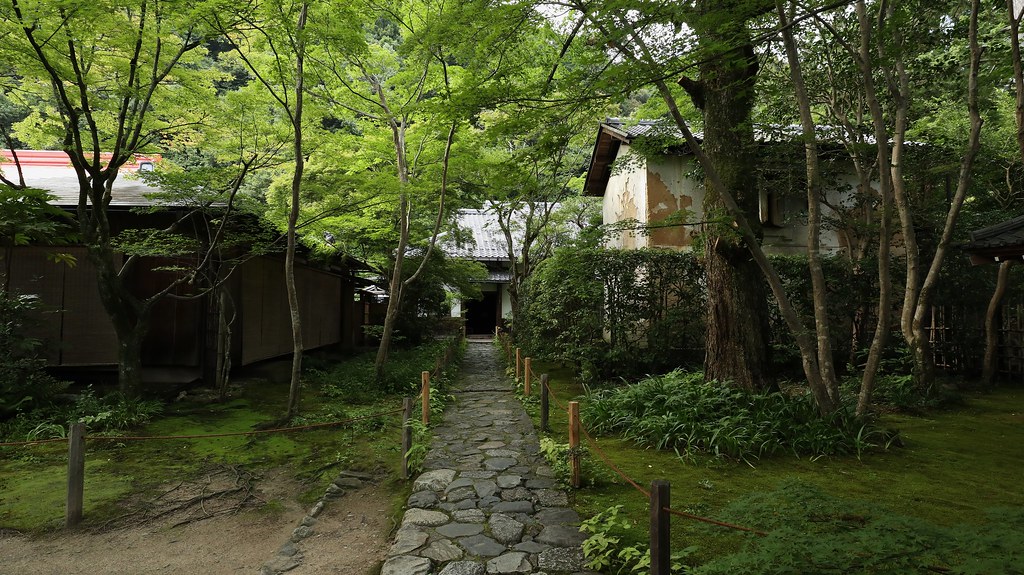#Ishikawa Jozan
Photo
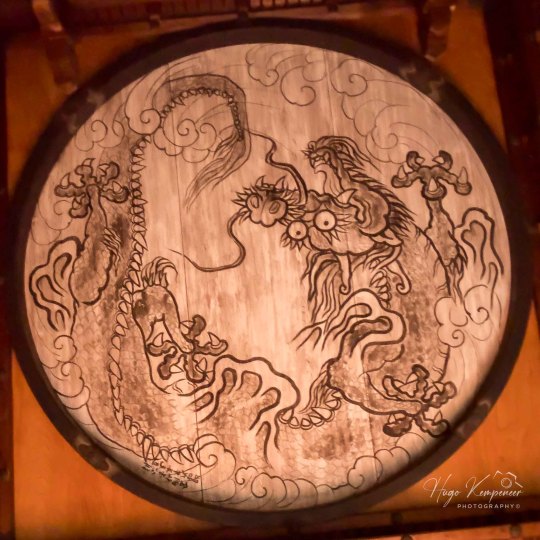
Hidden very quietly in the north of sacred Koya-san sits the Renge-ji Temple in Sakyo-ku, Kyoto.
Ishikawa Jozan designed this pond-style garden called “Chisen Kaiyushiki”.
#Buddhism#Chisen Kaiyushiki#Imaeda Chikayoshi#Ishikawa Jozan#Japan#Japanese garden#Koyo#Kyoto#Kōyō#Momijigari#Renge-ji#Renge-ji Temple#autumn#autumn photography#maple leaves#momiji#travel#trees#もみじ#紅葉#紅葉狩#蓮華寺
54 notes
·
View notes
Video
20230729 Jozan-en 1 by Bong Grit
Via Flickr:
夏、一番うるさいやつ。 @Jozan-en, Anjo city, Aichi pref. (愛知県安城市 丈山苑)
#Transparent#Transparency#Wing#Silhouette#Summer#Cicada#Insect#Animal#Green#Nature#Tree#Japanese garden#Ishikawa Jozan#Jozan Ishikawa#Jozan-en#Anjo#Aichi#Japan#Nikon#Nikon Df#AF-S NIKKOR 85mm f/1.8G#flickr
6 notes
·
View notes
Photo
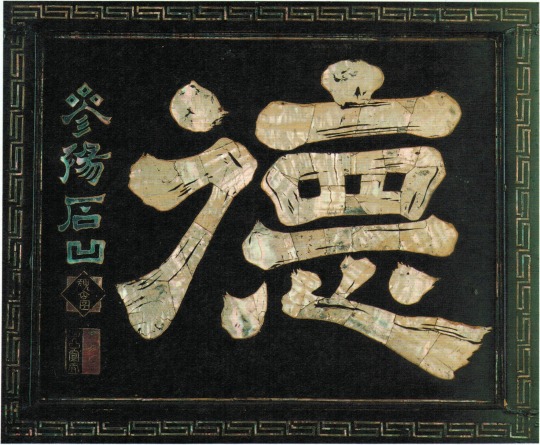
Distinctive calligraphy in antiquarian clerical script reading “Virtue” (徳) by the pioneering literati poet & samurai dropout Ishikawa Jōzan (石川丈山) (1583–1672)
Wooden plaque with inlaid mother-of-pearl, private collection
Image from “Shisendo: Hall of the Poetry Immortals” by J. Thomas Rimer, Jonathan Chaves, Stephen Addiss, and Hiroyuki Suzuki, Weatherhill, 1991, page 182
59 notes
·
View notes
Video
<strong>20170806 Jozan-en 7 <a href="https://www.flickr.com/photos/bonguri/">by Bong Grit</a></strong>
続きの日本間をあけっぴろげ。 @Jozan-en, Anjo, Aichi. (愛知県安城市 丈山苑)
#安城市#愛知県#日本#JP#Open#開放#Japanese room#Tatami#日本間#和室#畳#Jozan-en#丈山苑#Ishikawa Jozan#石川丈山#Anjo#安城#Aichi#愛知#Nikon#Df#COSINA#COSINA Voigtländer COLOR-SKOPAR 20mm F3.5 SL2 N Aspherical
8 notes
·
View notes
Video
Shisen-dō 詩仙堂 by Patrick Vierthaler
#Shisendo#Shisendō#Shisendou#Jozanji#Jōzanji#Jouzanji#Kyoto#Ichijoji#Ichijōji#Zen#temple#tempel#Japan#Japanischer#Japanese#garden#garten#Ishikawa#Jozan#Jōzan#autumn#fall#foliage#Herbst#Herbstlaub#momiji#京都#一乗寺#詩仙堂#丈山寺
16 notes
·
View notes
Quote
Evening mountains veiled in somber mist,
One path entering the wooded hill:
The monk has gone off, locking his pine door.
From a bamboo pipe a lonely trickle of water flows.
Ishikawa Jozan
2 notes
·
View notes
Photo
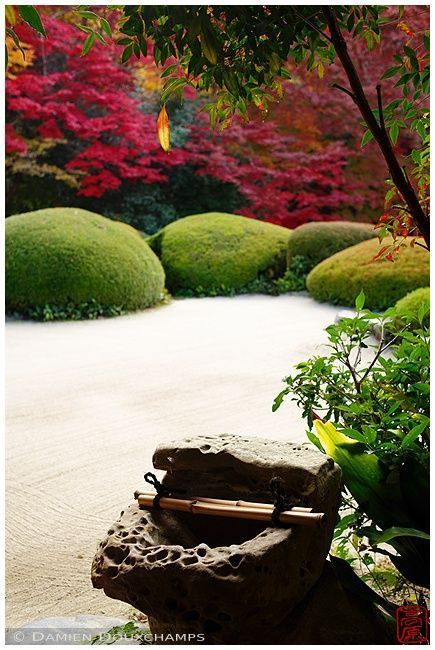
https://www.pinterest.es/pin/363947213638916601/
Shisendo built by a former samurai named Ishikawa Jzan (1583-1672) in 1641. Joza… Shisendo construit par un ancien samouraï nommé Ishikawa Jzan (1583-1672) en 1641. Jozan consacre la dernière partie de sa vie à des études, principalement des classiques chinois et de l'architecture de jardin. Jozan a choisi le nom “Shisen-do” d'après les 36 poètes classiques chinois Le jardin japonais (MarzaJardin japonais sur le toit tLampe japonaise en pierre
1 note
·
View note
Text
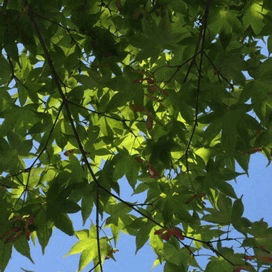
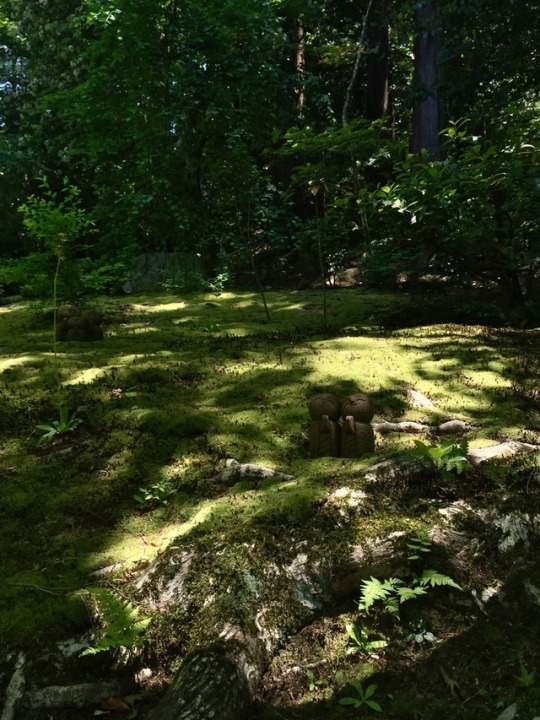
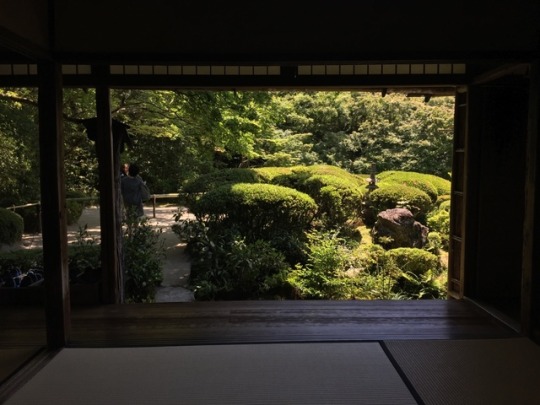
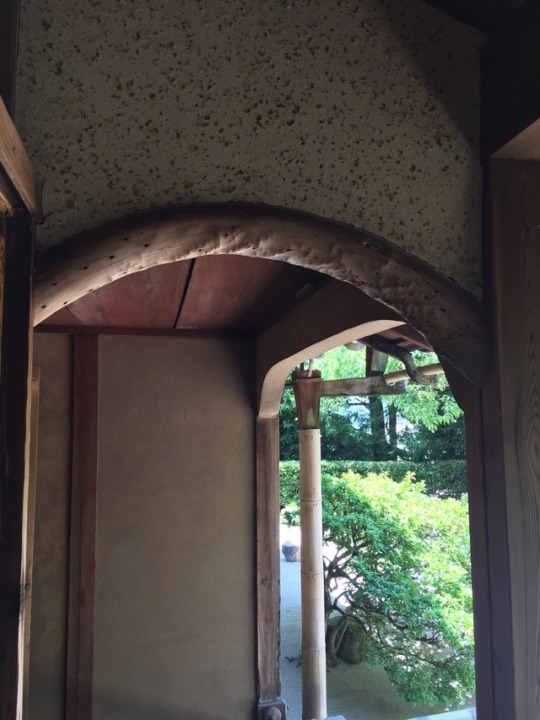
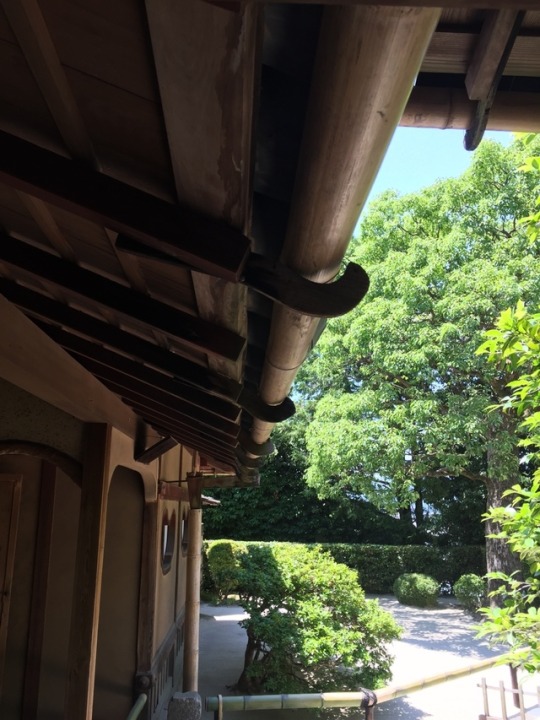
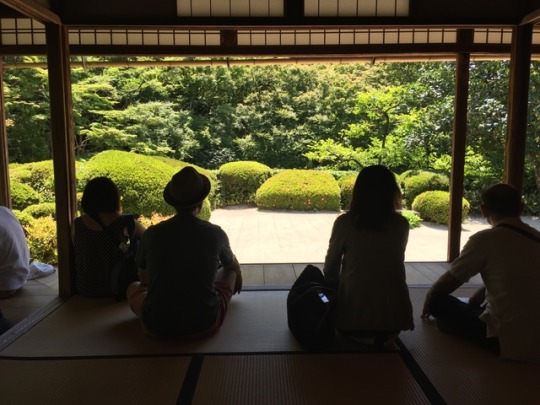
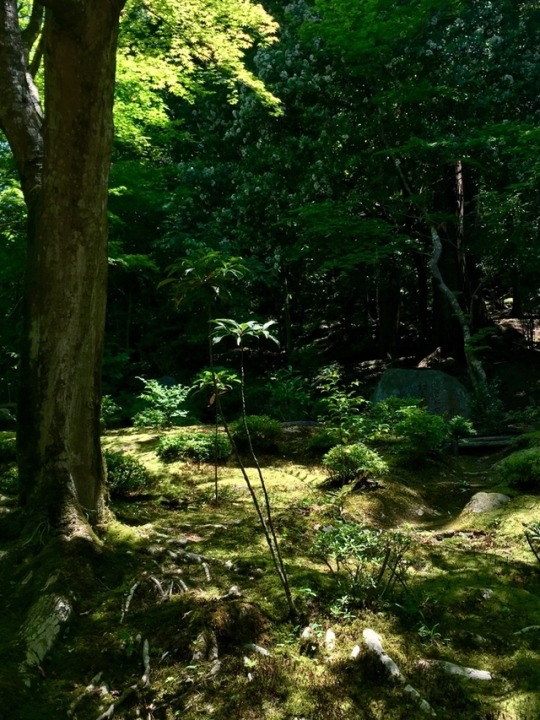
詩仙堂 Shisendo
Visita a la casa de descanso de la familia de Jozan Ishikawa, samurai que construyó su ~an~ basándose en los principios ZEN.
Jardín interior estilo 枯山水 karesansui, tipo de jardín japonés con arena, rocas, musgos y otros elementos naturales. Se basa en Yugen, la simplicidad elegante y Yohaku no Bi, la belleza del vacío.
4 notes
·
View notes
Photo
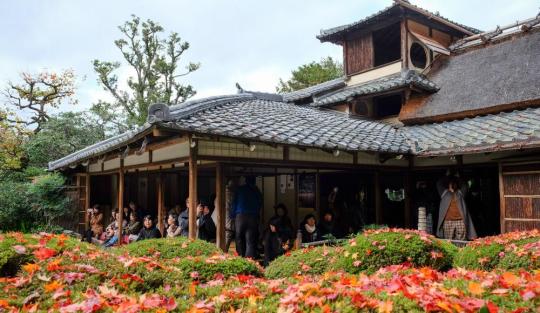
Shisen-do - Le jardin aux 4 saisons de Jozan Ishikawa
Shisen-do est un temple bouddhiste de la secte Soto situé dans les montagnes du quartier d'Ichijoji, au nord-est de Kyoto. Il s'agit également de la dernière résidence de Jozan Ishikawa, un ancien samouraï devenu moine philosophe au début du XVIIe siècle. On visite le pavillon pour son jardin sec à contempler toute l'année, et particulièrement au printemps …
Lire la suite sur Kanpai.fr
https://www.kanpai.fr/kyoto/shisen-do
0 notes
Photo
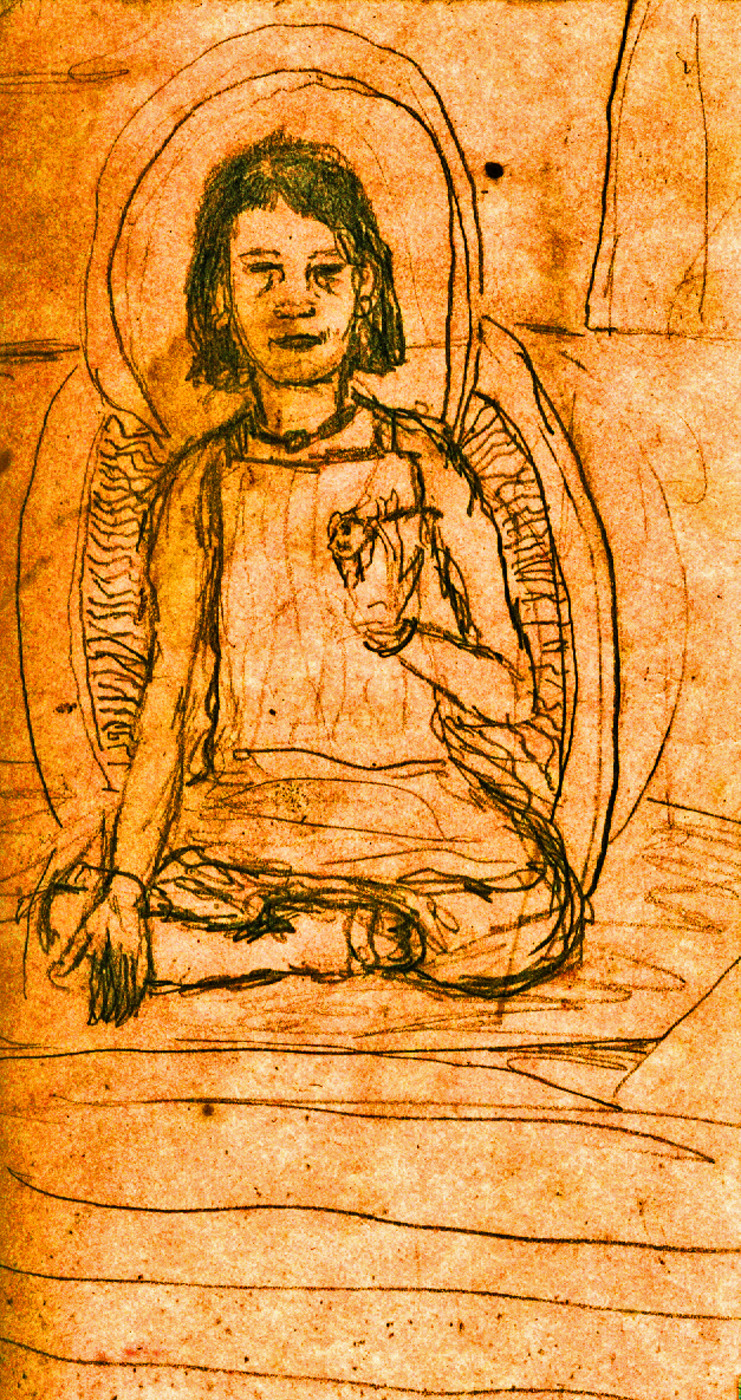
The evening is cool, and beyond the slackening rain,
through broken clouds, a moon immaculate.
-- Ishikawa Jozan
0 notes
Text
Đền Higashi Honganji - trung tâm Phật giáo lớn của Kyoto
https://otavietnam.com/?p=50988
Đền Higashi Honganji - trung tâm Phật giáo lớn của Kyoto [OTA VIỆT NAM] – Higashi Honganji là một trong hai ngôi đền lớn nằm ở trung tâm của Kyoto. Nó là ngôi đền thuộc giáo phái Jodo-Shinshu, một trong những giáo phái Phật giáo lớn nhất của Nhật Bản. Lịch sử ra đời của đền Higashi Honganji Đền Higashi Honganji Nishi Honganji và Higashi Honganji là hai ngôi đền lớn ở trung tâm của Kyoto. Đây là trụ sở của 2 phe trong Giáo phái Jodo-Shinshu Otani của Phật giáo Tịnh độ, một trong những giáo phái Phật giáo lớn nhất ở Nhật Bản. Giáo phái Tịnh độ này được thành lập bởi một nhà sư tên là Shinran (1173, 121263), người đã đơn giản hóa tư tưởng Phật giáo. Nó dựa trên giáo lý tụng kinh Phật – Ca ngợi Đức Phật Amida có thể dẫn đến sự cứu rỗi cá nhân. Sự kết hợp của một giáo lý đơn giản, với một thực tiễn đơn giản đã khiến hệ thống niềm tin của Shinran rất phổ biến với những người lao động bình thường. Sau khi Shinran qua đời, ngôi đền Honganji được thành lập để quảng bá giáo lý của ông, nhưng ngôi đền này đã bị buộc phải di chuyển nhiều lần trước khi cuối cùng được cấp đất ở Kyoto. Năm 1602, ngay sau khi Tokugawa Ieyasu trở thành Tướng quân của Nhật Bản, ông đã khuyến khích sự chia rẽ trong giáo phái Honganji để ngăn không cho nó trở nên quá mạnh. Higashi Honganji được xây dựng ở phía đông của chùa Honganji đầu tiên mà ngày nay được gọi là Nishi Honganji. Higashi Honganji được gọi là chùa Đông. Ngôi chùa còn lại – Nishi Honganji được gọi là ngôi chùa phía tây. Những con đường hẹp giữa hai ngôi chùa chứa nhiều cửa hàng bán nhang và đồ tạo tác Phật giáo bao gồm mokugyo, chuông chùa và bát. Cho đến nay, các tòa nhà của chùa Higashi Honganji đã bị phá hủy 4 lần bởi hỏa hoạn. Lần gần đây nhất là vào năm 1864 trong thời kỳ hỗn loạn chính trị và dân sự. Hầu hết các tòa nhà hiện tại đã được xây dựng lại vào cuối thế kỷ 19 và đầu thế kỷ 20. Đền Nishi Honganji là một di sản thế giới được UNESCO công nhận là một trong những di tích lịch sử của thành cổ Kyoto. Higashi Honganji có gì hay? Tòa điện chính của Higashi Honganji là Goeido. Đây là công trình bằng gỗ lớn nhất của Kyoto. Nó dành riêng để thờ Shinran – vị sư đã sáng lập ra giáo phái. Bên cạnh nó là Hội trường Amida, được dành riêng để thờ Đức Phật Amida (Phật A Di Đà) cũng là công trình lớn của chùa. Chính điện của ngôi đền Bên kia đường từ Nishi-Honganji là Bảo tàng Ryukoku mới khai trương (2011) dành riêng cho Phật giáo từ khi ra đời ở Ấn Độ, nó lan rộng khắp châu Á và đến Nhật Bản. Ở phía bắc của Bảo tàng Ryukoku là Bảo tàng Trang phục với các màn trình diễn trang phục từ Thời kỳ Heian (bao gồm cả việc sao chép quần áo mà các nhân vật mặc trong Chuyện kể Genji) cho đến ngày nay. Ngay phía nam của Nishi-Honganji là ngôi đền liên kết của Koshoji, được thành lập bởi Kyogo, một tín đồ của Rennyo, trụ trì thứ 8 của Honganji. Vườn Shosei-en (Kikokutei) ở phía đông Đền Higashi Honganji là biệt thự của trụ trì Higashi Honganji và có một khu vườn cảnh quan được thiết kế bởi Jozan Ishikawa (1583-1672) và Enshu Kobori. Một số tòa nhà ban đầu là một phần của Lâu đài Fushimi của Hideyoshi Toyotomi ở phía nam của Kyoto. Trong vườn Shoseien có đủ các loài hoa nở khắp 4 mùa vô cùng sống động. Vào mùa thu, khu vườn với bờ ao và mùa thu lá vàng rực rỡ luôn mê hoặc du khách khi có dịp tham quan. Trong vườn rải rác cũng có nhiều trà thất, rất lý tưởng để dừng chân. Thông tin chi tiết về chùa Higashi Honganji Địa chỉ: 3 Karasuma dori Shichijo-agaru Kyoto. Vé: Miễn phí. Higashi Honganji mở cửa từ: 5:50 đến 17:30 (tháng 3 đến tháng 10) 6:20 đến 16:30 (tháng 11 đến tháng 2) Vườn Shoseien mở cửa: Từ 9:00 đến 17:00 (Tháng 3 đến Tháng 10) Từ 9:00 đến 16:00 (Tháng 11 đến Tháng 2) Lượt vào cuối cùng kết thúc 30 phút trước khi đóng cửa Vé: 500 Yên Cách đi Chùa Higashi Honganji Chùa Higashi Honganji là một trong những trung tâm Phật giáo nổi tiếng lớn ở Kyoto, từng có vai trò quan trọng trong lịch sử. Do đó đây là địa điểm nhiều người thường ghé qua khi du lịch Nhật Bản. Để tới chùa, bạn có thể đi bộ từ ga Kyoto tầm 10 – 15 phút hoặc đạp xe một đoạn ngắn là tới. Nó nằm ở phía Bắc ga Kyoto. Một cách khác là bạn có thể đi xe bus từ Ga Kyoto với các xe như: # 5, # 26, # 50, # 101 hoặc # 205. Nguồn: Trippy Bởi - https://otavietnam.com/?p=50988
0 notes
Photo
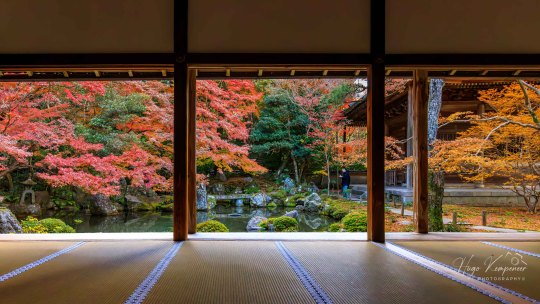
Hidden very quietly in the north of sacred Koya-san sits the Renge-ji Temple in Sakyo-ku, Kyoto.
Ishikawa Jozan designed this pond-style garden called “Chisen Kaiyushiki”.
#Buddhism#Chisen Kaiyushiki#Imaeda Chikayoshi#Ishikawa Jozan#Japan#Japanese garden#Koyo#Kyoto#Kōyō#Momijigari#Renge-ji#Renge-ji Temple#autumn#autumn photography#maple leaves#momiji#travel#trees#もみじ#紅葉#紅葉狩#蓮華寺
58 notes
·
View notes
Video
20230729 Jozan-en 4 by Bong Grit
Via Flickr:
雲のような形の明かり取りの窓。 @Jozan-en, Anjo city, Aichi pref. (愛知県安城市 丈山苑)
#Window#Indoor#Japanese room#Ishikawa Jozan#Jozan Ishikawa#Jozan-en#Anjo#Aichi#Japan#Nikon#Nikon Df#AF-S NIKKOR 50mm f/1.8G (Special Edition)#flickr
5 notes
·
View notes
Photo

Hanging scroll in an alcove featuring a portrait of the pioneering literati poet & samurai dropout Ishikawa Jōzan (石川丈山) (1583–1672) by his acquaintance, the painter Kanō Tan'yū (狩野探幽) (1602-1674) and a self-eulogy composed & inscribed by Jōzan himself in his distinctive antiquarian clerical script:
Nyoi in hand, leaning on an armrest,
wearing dark robe and black cap.
Silent in his noble visage;
brilliant is his spirit.
He communicates with the Creator
and nurtures the Tao within.
A stubborn old man now eighty years old,
a hermit of three-fold yang.
And who is this hermit, you may ask?
The Mountain Man of the Thirty-Six!
Image from “Shisendo: Hall of the Poetry Immortals” by J. Thomas Rimer, Jonathan Chaves, Stephen Addiss, and Hiroyuki Suzuki, Weatherhill, 1991, page 181 (Translation by Jonathan Chaves)
#japanese literature#japanese poetry#漢詩#kanshi#石川丈山#ishikawa jozan#japanese calligraphy#japanese art#狩野探幽#kano tanyu#hanging scroll#床の間#tokonoma#crazyfoxarchives
13 notes
·
View notes
Video
<strong>Old entrance <a href="https://www.flickr.com/photos/100016856@N08/">by Masako Ishida</a></strong>
location : Rakuhoku Renge-ji temple Kyoto city,Kyoto prefecture,Japan
京都 洛北 蓮華寺
Rakuhoku Renge-ji temple :
This temple belongs to the Tendai sect of Buddhism cowned with the mountain name of Kinyozan. Shigenao imaeda( 今枝重直),a retainer of the Maeda Clan in Kaga,present Ishikawa pref.,entered the priesthood around period from 1661 to 1673. He built a residence here and spent his later years associating with such people as Jozan Ishikawa 石川丈山and Tanyu Kano狩野探幽.His groundson Chikayoshi今枝民部近義,who admire the virtuous Shigenao, transfered a temple from Hachijo-Shiokoji(元西八条塩小路附近)to this place in order to pray for the repose of his grandfather. He made it as a sub-temple of the Enryakuji Jitsuzobo Temple延暦寺実蔵坊. The principal statue enshrined in main hall is of Shakamuni Tothagata.Unique Rengeji temple-style tone lanterns with hexagonal shades and a monument commemorating Shigenao inscribed Tehsho-style calligraphy written by Jozan Ishikawa on top and passage composed by Jun-an Kinoshita are found on the grounds beautifully covered with moss. The garden woth crane stone and turtle islands in the lake,an excellent example from Edo period(1603-1867) -Kyoto city
5 notes
·
View notes
Video
Old entrance by maco-nonch★R
Via Flickr:
location : Rakuhoku Renge-ji temple Kyoto city,Kyoto prefecture,Japan 京都 洛北 蓮華寺 Rakuhoku Renge-ji temple : This temple belongs to the Tendai sect of Buddhism cowned with the mountain name of Kinyozan. Shigenao imaeda( 今枝重直),a retainer of the Maeda Clan in Kaga,present Ishikawa pref.,entered the priesthood around period from 1661 to 1673. He built a residence here and spent his later years associating with such people as Jozan Ishikawa 石川丈山and Tanyu Kano狩野探幽.His groundson Chikayoshi今枝民部近義,who admire the virtuous Shigenao, transfered a temple from Hachijo-Shiokoji(元西八条塩小路附近)to this place in order to pray for the repose of his grandfather. He made it as a sub-temple of the Enryakuji Jitsuzobo Temple延暦寺実蔵坊. The principal statue enshrined in main hall is of Shakamuni Tothagata.Unique Rengeji temple-style tone lanterns with hexagonal shades and a monument commemorating Shigenao inscribed Tehsho-style calligraphy written by Jozan Ishikawa on top and passage composed by Jun-an Kinoshita are found on the grounds beautifully covered with moss. The garden woth crane stone and turtle islands in the lake,an excellent example from Edo period(1603-1867) -Kyoto city
#Kyoto#KIoto#Temple#templo#old#京都#洛北#蓮華寺#Renge-ji#Zen#Buddhism#Canon#EOS M5#traditional#traditionnel#traditionell#日本
0 notes

